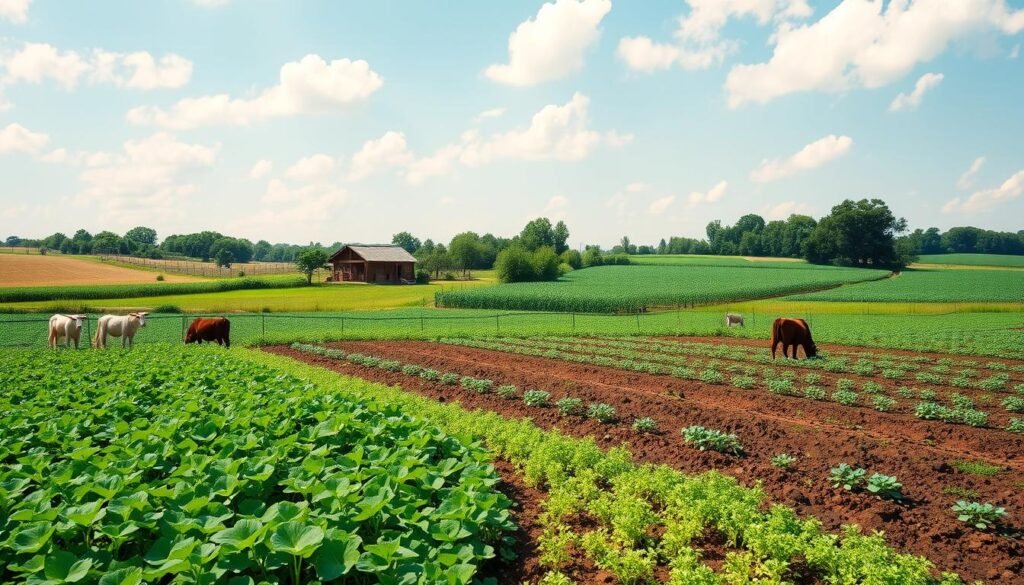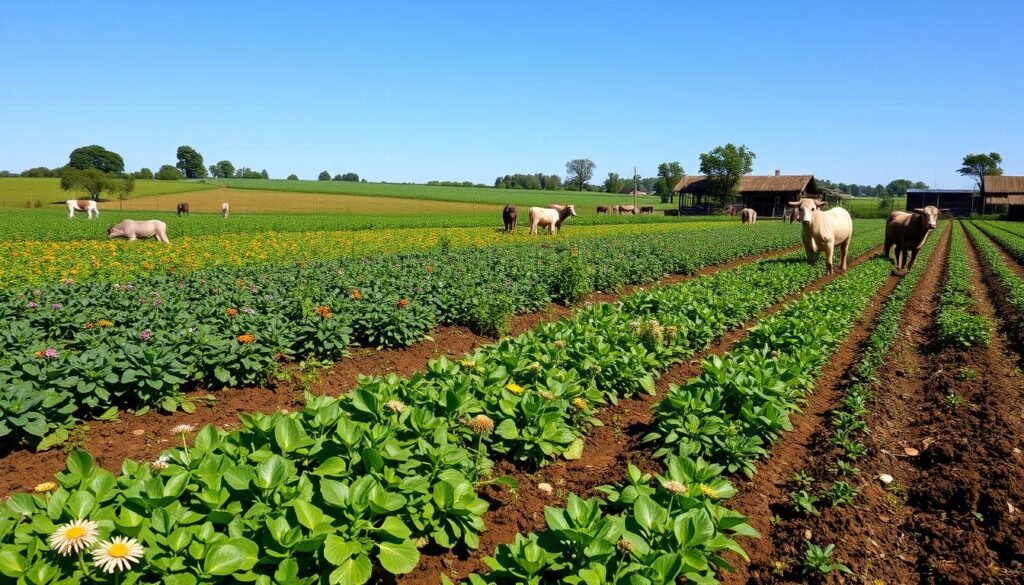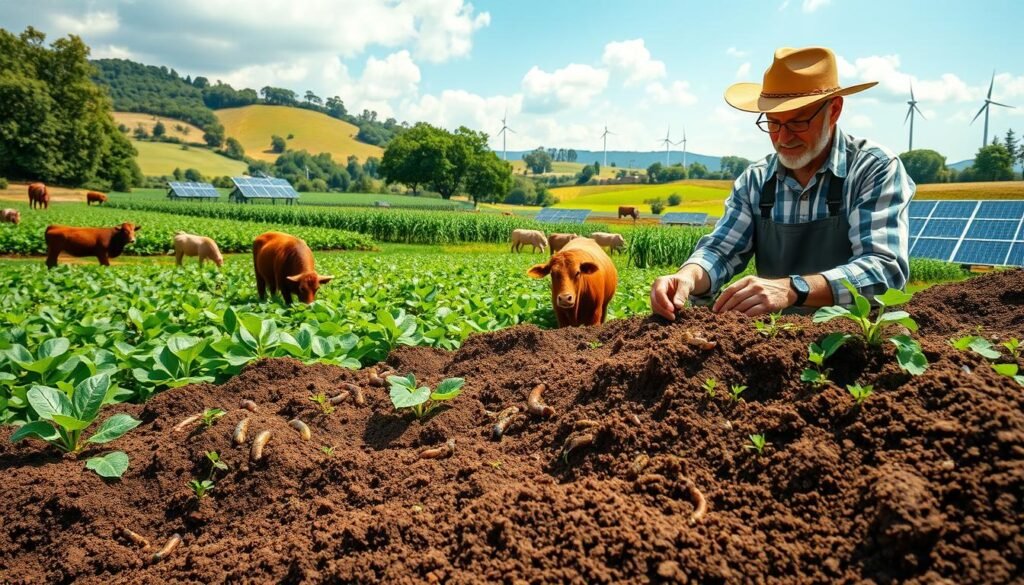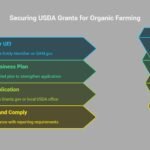In recent years, regenerative farming has gained significant attention for its environmental benefits, such as improving soil health, sequestering carbon, and promoting biodiversity. However, what many people overlook are the economic benefits of regenerative farming. This sustainable agricultural practice isn’t just good for the planet—it can also be incredibly beneficial for your wallet. In this blog post, we’ll explore how regenerative farming can save you money, increase profitability, and create long-term financial stability.

Concept of Regenerative Farming
Regenerative farming is a holistic approach to agriculture that focuses on restoring and enhancing the health of the soil, ecosystems, and communities. Unlike conventional farming, which often depletes resources, regenerative farming aims to work in harmony with nature. Key practices include:
- Cover cropping: Planting crops to cover the soil and prevent erosion.
- Crop rotation: Alternating crops to improve soil fertility.
- No-till farming: Reducing soil disturbance to maintain its structure.
- Composting and organic amendments: Enriching the soil naturally.
- Agroforestry: Integrating trees and shrubs into farming systems.
The Economic Benefits of Regenerative Farming
While the environmental advantages of regenerative farming are well-documented, its economic benefits are equally compelling. Here’s how regenerative farming can positively impact your finances:
1. Reduced Input Costs
Regenerative farming minimizes the need for expensive synthetic fertilizers, pesticides, and herbicides. By relying on natural processes like composting and crop rotation, farmers can significantly cut down on input costs.
| Input | Conventional Farming Cost | Regenerative Farming Cost | Savings |
|---|---|---|---|
| Synthetic Fertilizers | $200/acre | $50/acre (compost) | $150/acre |
| Pesticides | $100/acre | $20/acre (natural predators) | $80/acre |
| Herbicides | $80/acre | $10/acre (cover crops) | $70/acre |
| Total Savings | $380/acre | $80/acre | $300/acre |
2. Increased Soil Fertility and Crop Yields
Healthy soil is the foundation of productive farming. Regenerative practices improve soil structure, water retention, and nutrient availability, leading to higher crop yields over time.
- Case Study: A farmer in Iowa switched to regenerative practices and saw a 20% increase in corn yields within five years, resulting in an additional $150/acre in revenue.
3. Diversified Income Streams
Regenerative farming encourages diversification, such as integrating livestock, agroforestry, or specialty crops. This reduces reliance on a single crop and creates multiple income streams.
- Example: A farmer in California added almond trees to their regenerative system, generating an additional $1,000/acre annually from almond sales.
4. Access to Premium Markets
Consumers are increasingly willing to pay a premium for sustainably grown products. Regenerative farmers can tap into these markets, commanding higher prices for their crops.
| Product | Conventional Price | Regenerative Price | Premium |
|---|---|---|---|
| Organic Wheat | $6/bushel | $8/bushel | $2/bushel |
| Grass-Fed Beef | $4/lb | $6/lb | $2/lb |
| Regenerative Vegetables | $1.50/lb | $2.50/lb | $1/lb |
5. Resilience to Climate Change
Regenerative farming builds resilience against extreme weather events, such as droughts and floods, by improving soil health and water retention. This reduces crop losses and ensures consistent income.
- Fact: Farms using regenerative practices experienced 40% less crop damage during droughts compared to conventional farms.
6. Government Incentives and Grants
Many governments and organizations offer financial incentives for adopting regenerative practices. These can include grants, tax breaks, and subsidies.
- Example: The USDA’s Conservation Stewardship Program provides up to $40,000 annually to farmers implementing regenerative practices

How to Get Started with Regenerative Farming
Transitioning to regenerative farming doesn’t have to be overwhelming. Here’s a step-by-step guide to help you get started:
- Assess Your Current Practices: Identify areas where you can reduce synthetic inputs and improve soil health.
- Start Small: Implement one or two regenerative practices, such as cover cropping or composting.
- Educate Yourself: Attend workshops, webinars, or join regenerative farming communities.
- Monitor Progress: Track changes in soil health, crop yields, and input costs to measure success.
- Seek Financial Support: Explore grants, loans, and incentives available for regenerative farmers.

Frequently Asked Questions (FAQs)
Q: Is regenerative farming profitable in the short term?
A: While some benefits, like reduced input costs, are immediate, others, such as increased yields, may take a few years to materialize. However, the long-term financial gains are substantial.
Q: Can small-scale farmers benefit from regenerative farming?
A: Absolutely! Regenerative farming is scalable and can be adapted to farms of all sizes.
Q: What are the biggest challenges of transitioning to regenerative farming?
A: The initial learning curve and potential short-term yield fluctuations can be challenging. However, with proper planning and support, these hurdles can be overcome.
Conclusion: A Win-Win for Your Wallet and the Planet
The economic benefits of regenerative farming are undeniable. From reducing input costs and increasing yields to accessing premium markets and building climate resilience, regenerative farming offers a sustainable path to financial stability. By investing in regenerative practices, you’re not only improving your bottom line but also contributing to a healthier planet.
Are you ready to take the first step toward a more profitable and sustainable future? Share this post with fellow farmers and join the regenerative farming movement today!
References for Data and Claims:
- Reduced Input Costs:
- Increased Soil Fertility and Crop Yields:
- Montgomery, D. R. (2017). Growing a Revolution: Bringing Our Soil Back to Life. W.W. Norton & Company.
- Lal, R. (2020). Regenerative agriculture for food and climate. Journal of Soil and Water Conservation.
Link
- Diversified Income Streams:
- Access to Premium Markets:
- Resilience to Climate Change:
- Government Incentives and Grants:

